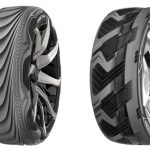It's Easier Here.
Leith Cars Blog
Electric vehicles are one of the more teasing and elusive challenges for automakers. As a potential—and we use this term optimistically—replacement for gasoline-powered cars, people are used to seeing a lot of hype and hope about electric vehicles. Assuming you’ve seen some headlines but haven’t thoroughly researched the topic, we thought we’d provide a quick update on where we are in electric vehicle technology.
The focal point regarding EVs is the battery. Why it’s that and not the motor, we don’t know; we’re just assuming the motor is a done deal at this point since no one is writing about it. We know that EVs provide better acceleration from a standstill than any other vehicle type, and that’s about it.
The flashiest name in EVs today is Tesla, the Silicon Valley California that has used its knowledge about computers to brashly challenge the more established automotive players. This year Tesla and Toyota ended a partnership that was meant to bring mass-production to EVs.
Within months Tesla had announced that it is building a $5 billion factory for EV batteries in Nevada. The factory will be able to produce half a million batteries in a year, which is more than all the factories in the world currently do combined. This will allow Tesla to save 30 percent on what it currently pays for batteries.
But even though everyone loves to see the sticker price of a car fall, what EVs need even more is battery life. Battery life can range between 30-90 miles between recharges, which is much lower than the 400-mile average for gasoline-powered cars. What EV batteries need is potency.
There is one possibility. EVs currently use lithium-ion batteries just like the ones in our phones, tablets and laptops. In turns out, however, that batteries using a combination of aluminum, tap water and air can produce ranges of up to 1,100 miles before needing a recharge. In other words, triple the range of a typical gasoline-fueled car. These batteries are being developed by Alcoa and Phinergy.
What’s the catch? For one thing the aluminum would eventually wear out. That’s a problem because automakers are already starting to use more of this material in the actual body of vehicles. This could be mitigated by recycling old batteries. A better solution would be to use other materials for car bodies, like carbon fiber, which Audi and BMW are looking into. That way, we’d have all the aluminum we need.
In any case, Phinergy and Alcoa estimate their aluminum-air batteries would last about one year. So far Volkswagen and IBM have also shown interest in this technology and are developing products. What’s missing is a price tag, a fact which Tesla is exploiting by building its factory and cementing its position as the EV battery king. Until the other companies get their act together and nail down a technology blueprint, a price tag will elude them, and long-range, cost-effective EVs will elude us all.
More from my site







